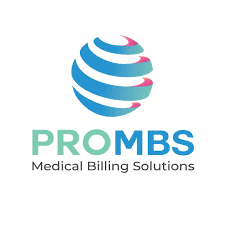Profile
Hyperlipidemia—commonly known as high cholesterol—is one of the most widespread chronic conditions treated in the United States. As more patients seek preventive and ongoing care, healthcare providers face increasing demand for accurate clinical documentation, proper coding, and efficient claims management. For practices striving to remain profitable while delivering quality care, understanding the clinical and financial side of hyperlipidemia is essential.
At Pro Medical Billing, we help clinics, specialists, and healthcare providers streamline the billing process for chronic conditions like hyperlipidemia to minimize denials and optimize reimbursement.
What Is Hyperlipidemia?
Hyperlipidemia refers to elevated levels of lipids—such as cholesterol and triglycerides—in the blood. While often asymptomatic, untreated hyperlipidemia can significantly increase the risk of heart disease, stroke, and other cardiovascular complications.
Common Types of Hyperlipidemia
Hypercholesterolemia (high LDL or total cholesterol)
Hypertriglyceridemia (elevated triglycerides)
Mixed hyperlipidemia (high cholesterol and triglycerides)
Familial hyperlipidemia (genetic form)
Why Hyperlipidemia Matters in Healthcare
Because hyperlipidemia is typically a long-term condition, patients require:
Routine lipid panel testing
Ongoing monitoring visits
Medication management
Lifestyle counseling
Cardiovascular risk assessments
This creates a steady flow of clinical encounters that need accurate coding and clean claim submission to ensure providers get paid correctly and promptly.
ICD-10 Codes for Hyperlipidemia
Correct ICD-10 coding is crucial for preventing claim rejections. Common codes include:
E78.0 – Pure hypercholesterolemia
E78.1 – Pure hyperglyceridemia
E78.2 – Mixed hyperlipidemia
E78.5 – Hyperlipidemia, unspecified
E78.6 – Lipoprotein deficiency
Submitting the wrong code—or leaving a code unspecified when clinical documentation supports specificity—can lead to downcoded claims or outright denials.
Documentation Requirements Providers Should Follow
To support medical necessity and avoid insurance pushbacks, documentation should include:
Results of lipid panel tests
Current medications (e.g., statins, fibrates)
Cardiovascular risk factors (diabetes, hypertension, obesity)
Lifestyle counseling and follow-up plans
Relevant comorbidities
Strong documentation not only improves patient care but also supports accurate billing and coding.
Common Billing Challenges with Hyperlipidemia
Providers often face:
1. Medical Necessity Denials
Payers may deny claims for lipid panels or follow-up visits if documentation doesn’t clearly support diagnosis or treatment.
2. Incomplete Coding
Under-coding or using unspecified codes can result in lower reimbursement.
3. Bundling and Modifier Errors
Improper use of CPT codes (e.g., 80061 for lipid panel) and missing modifiers may lead to claim rejections.
How Pro Medical Billing Helps Providers
At Pro Medical Billing, we specialize in managing chronic-condition billing, including hyperlipidemia-related encounters. Our services include:
Accurate ICD-10 coding to prevent denials
Clean claim submission to ensure faster payments
Revenue cycle management tailored to primary care, cardiology, endocrinology, and internal medicine
Audit-ready documentation support
Denial management and appeals processing
We ensure that every hyperlipidemia-related service—whether it’s a routine lipid panel or a comprehensive follow-up visit—is billed correctly and reimbursed efficiently.
Final Thoughts
Hyperlipidemia will remain a major clinical and reimbursement focus as preventive healthcare becomes essential for long-term patient outcomes. The right medical billing partner can significantly reduce administrative workload and improve revenue flow.
If your practice treats patients with chronic conditions like hyperlipidemia and you want to improve billing efficiency, Pro Medical Billing is here to help.
Map
Sorry, no records were found. Please adjust your search criteria and try again.
Sorry, unable to load the Maps API.





